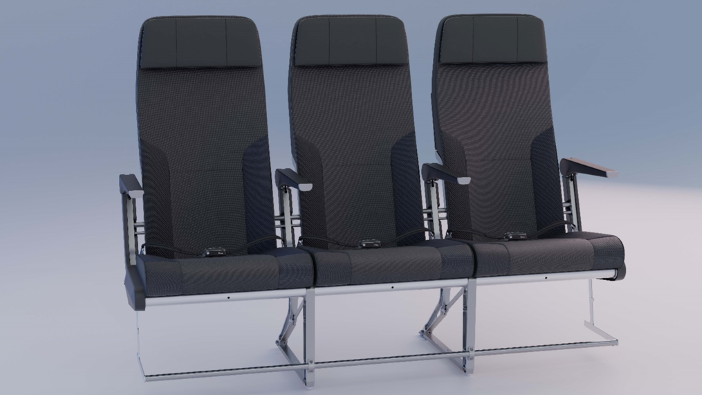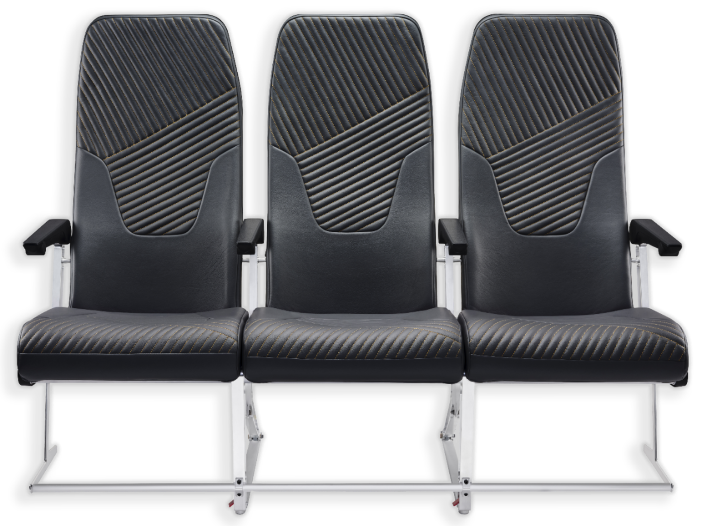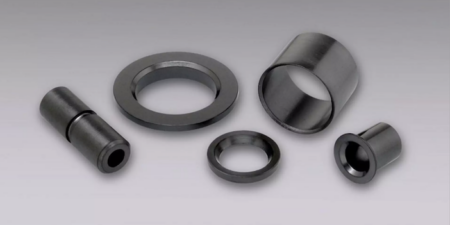Visitors to last year’s Aircraft Interiors Expo may recall the preview of Mirus Aircraft Seating’s Kestrel ultra-light weight slimline economy-class seat, which weighed in at 7.5kg. A major advance has been made for the production version of Kestrel, being launched at this year’s show, as Mirus engineers have further reduced seat weight, bringing it down by an additional 0.5kg per passenger – making it 7kg per pax, fully dressed.
Kestrel has been designed specifically to meet the growing market demand from airlines operating short- to medium-range routes, and is claimed to enable airlines to achieve maximum cabin density while maintaining an acceptable level of passenger comfort and living space. Mirus says the key is the pre-recline angle of the seat, which ensures that even passengers exceeding 6ft (1.82m) in height can have adequate knee and shin clearance, even at a 28in seat pitch.
Kestrel is now open to order and is being certified for the Airbus A320 family and Boeing 737 aircraft, with first delivery slots available at the end of 2023.
Introducing the Falcon seat
Mirus is also launching a new economy seat aimed at the mid-to-long-range market. Continuing the avian naming theme, the Falcon has a slimline seatback to maximise living space, a 15-degree seat recline angle, and is the first Mirus seat to support seatback IFE display provision.

The company says that Falcon weighs approximately 11kg per passenger place fully dressed, and the design is optimised for a 29-32in seat pitch. Key features include an articulated seat pan, a six-way adjustable headrest, a lightweight hybrid composite seatback structure, custom finish options, and the option to integrate an IFE monitor of up to 13in.

In other Mirus news, FlyOne, a low-cost airline headquartered in Chișinău, Moldova, has selected the latest evolution of the Hawk economy seat. The seats are to be installed in two A321 aircraft with a 220-passenger configuration, and will be delivered in June 2023.
Following a competitive selection process, Mirus says that FlyOne opted for the Hawk because of its slimline and cost-efficient design.





